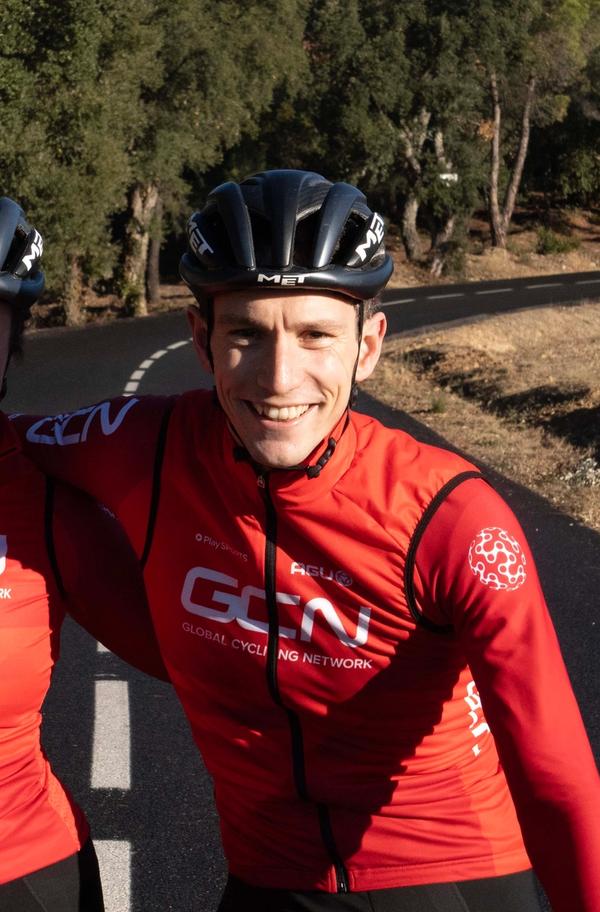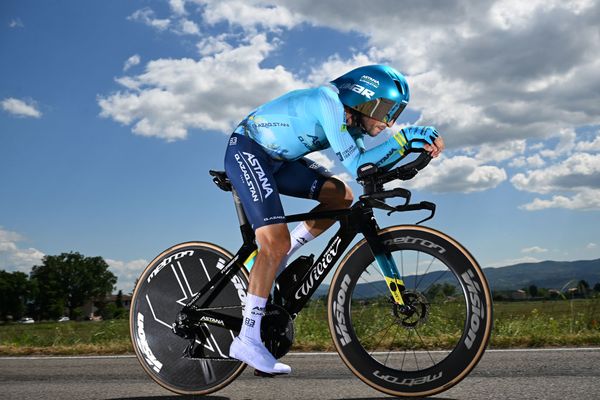Past, present and future of road bike tech: Aerodynamics with Cervélo co-founder Gerard Vroomen
Si Richardson caught up with industry pioneer Gerard Vroomen to learn more about how aerodynamics has defined bike design
Tom Hallam-Gravells
Online Production Editor
Few bike brands have had a larger impact on professional cycling in recent seasons than Cervélo. The Canadian company has teamed up with Jumbo-Visma to form one of the strongest race-winning partnerships in cycling history. Multiple Grand Tour and monument victories have flowed, culminating in Jumbo-Visma’s history-making exploits in 2023 when it became the first team to win all three Grand Tours in a single season.
The foundations for those victories were provided by Cervélo’s current range of S5, R5 and P5 bikes, but each of these can trace its origins back to decades of development and innovation, spanning multiple iconic bikes since the brand emerged on the scene in 1995.
Few people have been as instrumental in the brand’s rapid rise - and the cycling industry in general - than co-founder Gerard Vroomen, who has since become the head of design at 3T.
GCN’s Si Richardson recently caught up with the Dutchman to discuss how aerodynamics have influenced bike design in the past, present and future. Here are some snippets from the interview, but you can watch the full half-hour chat in the video above.
Si Richardson: Aerodynamics was clearly a focus from the early days of Cervélo. Why was that and had you taken inspiration from other bikes?
Gerard Vroomen: No, not really. As a teenager I was into human-powered vehicles. These kinds of race bikes were pretty pedestrian to me, it had to go at least 100 kph, not 50. So I was in the human-powered vehicle scene and Mike Burrows was pretty big in the scene with the Windcheetah and he was of course also the real inventor of the Lotus bike.
There were other people like the man who started the International Human Powered Vehicle Association, Chet Kyle. He was the one who designed the bikes for the US Olympic team in 84 and again in 96.
I had some contact with people who straddled the human powered vehicle and the normal racing bike worlds, but I was really only interested in the human powered vehicles, not in normal racing bikes.
That sort of changed I think in around 93, when I organised a conference and Chet Kyle was one of the speakers. He said that it's kind of nice to design bikes for the Olympics, because I always thought the rules were ridiculous and were hampering, but it's nice to have rules because then you can find ways around it or ways that they didn't intend. So, the more rules, the better.
Where did the inspiration for Cervélo’s first aero road bike come from?
Our general idea just came from, we knew this is important and we're building all these time trial bikes, so why wouldn't you want that advantage on a road bike?
Of course, the advantage is smaller if you're sitting in the middle of the pack, but it's hard to win a race in the middle of the pack, so at some point you’ve got to go to the front. So if you go 100 kilometres at the front, then aerodynamics matter and it’s just a time trial without aero. Even if you're a sprinter, at least at some point you’ve got to be in the wind if you want to win, so we realised that the advantages were smaller but they weren't zero. If you could get those advantages without too much of a weight penalty or stiffness penalty, then it would be advantageous to do that.
We were always interested in that, we just didn't get the same exposure for aero road bikes as we did for the time trial and triathlon bikes just because of visibility in the sport. It's a lot easier to be visible in triathlon, for example, than that it is in road racing. You don't need to sponsor a whole team. That's sort of where we got our start from a sales and a visibility point of view, but our interest was always there.
How did you use data to develop the first carbon bikes? Was it a combination of CFD, wind tunnel and real world?
In a useful way, CFD (computational fluid dynamics) came after. In the beginning, and already before we started Cervélo, we were already going to the wind tunnel with people like Steve Head.
The old-school aerodynamics was building some shapes in advance and going to the tunnel, then using clay and sanding things off and whatever to try different shapes. Then taking as many photos as you could so you could sort of remember what on Earth you'd done. And then you'd figure out what the best combination of that was and build that into a bike.
The first carbon frames that we did in the tunnel, that would have been the Soloist with a lot of clay added to it, and then translating that shape into a cat file that you would then make moulds out of.
With the emergence of disc brakes, how difficult has it been to maintain aero performance?
The aerodynamics of a disc brake are actually not that bad. To put it a different way, the aerodynamics of a rim brake are not very good. You always had this fork crown and you stuck this brake on top of it. Now with taking that away, you see that whole transition between the front wheel with the tyre and the rim and the head tube, now you can make a much nicer shape.
You gain it there but then of course you lose it a bit on the fork where you have to stick the calliper on and the disc, but overall the difference between those two brake set-ups isn't isn't that big, aerodynamically, if you're optimising both reasonably well.
The weight, of course, is a different story. The disc brake is a lot heavier, so that has an effect on aero bikes. In UCI rules, the aero bike used to have zero weight penalty at the end because any frame could stay under 6.8kg [UCI weight limit] if it was well designed, then you put some other light parts on it. Now you get a lot of brands where their climbing bike with rounder tubes can stay under the 6.8kg but their aero frame will be over 6.8kg.
That has had an indirect negative effect on aero frames and is probably one of the reasons why now these one frames that can do it all are popping up. If you can say, ‘I can combine both’, then you know you can save some weight because your tubes aren't as deep and as thin anymore as they used to be, but you have a good reason and excuses for that.
You can save the weight, go under the UCI limit again, and for the production, it must be easier to make just one frame instead of two.
- Read more: Specialized's Tarmac SL8 do-it-all superbike
What makes modern bikes more aerodynamic than their predecessors, from 10 or 20 years ago?
The shapes have just gotten better. I mean the shapes have kept developing since since the R3 [Cervélo model released in 2008], so the shapes are better.
The integration of parts is just better. It's not just that the down tube has a better shape but that it also does a better job of taking the airflow from the front wheel and straightening it out. The way the fork and the fork crown shape is integrated has gotten a lot better. Then of course, if done well, cables inside are much better. Shielding of the rear tyre is much better. Shielding of the water bottles has gotten better.
All these things have certainly gotten better.
Aerodynamics have developed a lot since Cervélo was founded. Where will the technology go next and has aero peaked?
I don't think it has peaked in a sense that it [the level of technology] then goes down again, but it is sort of that long tail. Yes we’re nearing perfection and I think also it has sort of peaked in the sense that the interest probably has peaked. Now, more and more people are into more more diverse types of riding, so different terrain and all these kinds of things. Other things like the tyres just become more important in people's decisions and that then puts aero down in the pecking order.
- Read more: Thin vs wide: which tyre is right for you?
20 years ago, I don't think tyre clearance was in the top three right for people to make decisions over. Nowadays, for a lot of road cyclists who now see themselves as road plus much more cyclists, those kinds of things have come up.
Check out more tech features on the GCN website, linked here.








.jpg?w=600&auto=format)



.jpg?w=600&auto=format)